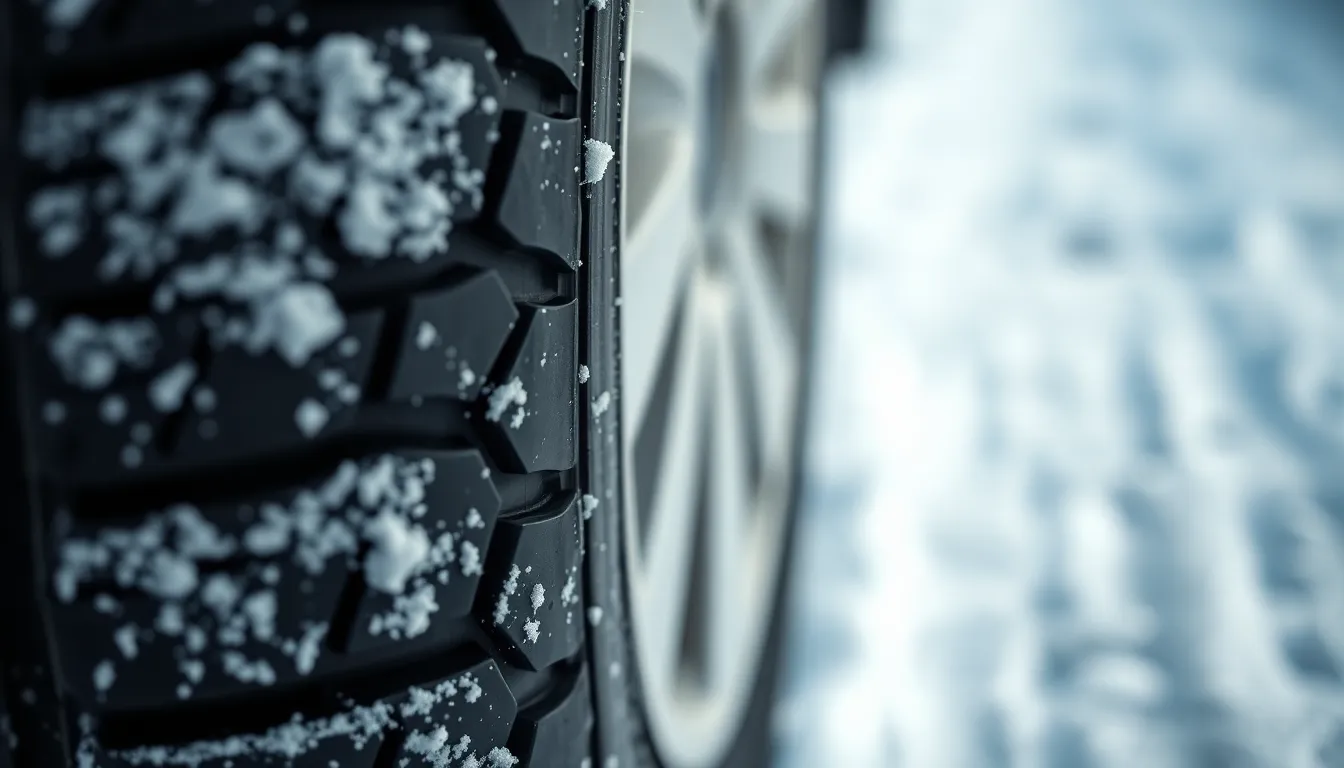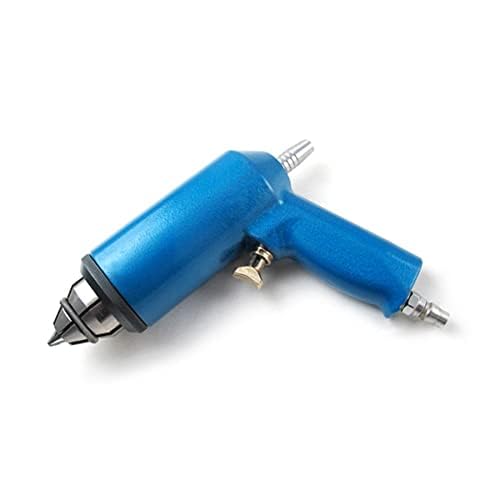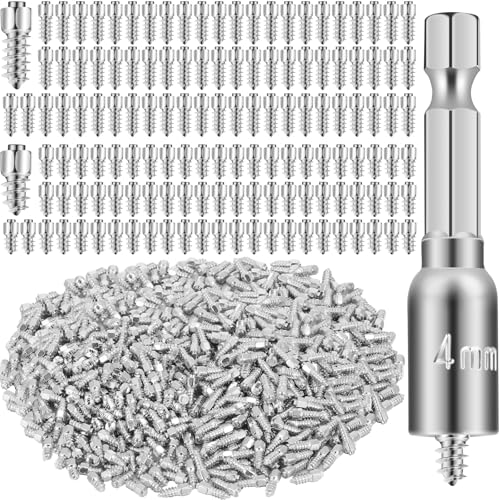Winter driving conditions can transform even the most confident drivers into cautious crawlers on icy roads. When temperatures drop and snow begins to fall, we’re faced with a critical decision that could mean the difference between safe travels and dangerous slides.
Studdable tires represent one of winter’s most effective weapons against treacherous road conditions. These specialized tires feature pre-molded holes designed to accommodate metal studs, creating an aggressive grip system that bites into ice and packed snow. Unlike traditional winter tires that rely solely on rubber compounds and tread patterns, studdable tires offer the option to add metal studs for extreme traction.
We’ll explore everything you need to know about studdable tires – from how they work to legal considerations and performance benefits. Whether you’re dealing with steep mountain passes or handling city streets during ice storms, understanding studdable tires can help you make an well-informed choice about your winter driving safety.
What Are Studdable Tires
Studdable tires are specialized winter tires engineered with pre-molded holes that accommodate removable metal studs. These tires combine the enhanced traction capabilities of traditional winter tires with the option to add metal studs for maximum grip on ice and packed snow surfaces.
The construction of studdable tires differs significantly from standard winter tires through their unique tread design. Manufacturers create precisely positioned holes throughout the tire tread during the molding process, typically ranging from 90 to 190 holes per tire depending on the size and brand. Each hole measures approximately 9mm in diameter and extends deep enough to securely hold tungsten carbide or steel studs.
Key Components of Studdable Tire Design
The rubber compound in studdable tires maintains flexibility in temperatures as low as -40°F while providing durability to withstand stud installation and removal. Advanced tread patterns feature:
- Directional siping – Thousands of thin slits that create additional biting edges
- Deep grooves – Channels that evacuate snow and slush from the contact patch
- Reinforced sidewalls – Enhanced construction to support stud installation weight
- Specialized rubber compounds – Formulations that remain pliable in extreme cold
Stud Installation Process
Metal studs insert into the pre-molded holes using specialized pneumatic tools or manual installation equipment. Each stud consists of a tungsten carbide tip embedded in a steel or aluminum body that fits snugly into the tire hole. Professional installation ensures proper stud depth and alignment, with studs protruding approximately 1.2mm from the tread surface.
The installation timing matters significantly for optimal performance. Fresh studs require a break-in period of 50 to 100 miles of gentle driving to properly seat within the tire holes and achieve maximum effectiveness on ice.
How Studdable Tires Work

Studdable tires function through a specialized design that combines winter-ready rubber compounds with strategically placed holes for optional stud installation. These tires deliver enhanced traction in cold weather conditions even without studs installed.
Pre-Drilled Holes Design
Pre-drilled holes are staggered across the tire’s tread surface in a pattern specifically engineered for optimal ice traction. Each hole is precisely sized and positioned to accommodate standard tire studs while maintaining the tire’s structural integrity. The empty holes remain sealed during non-studded use, preventing debris accumulation that could compromise tire performance.
Manufacturers create these holes using specialized molding techniques that ensure consistent depth and diameter across the entire tread surface. The staggered pattern distributes potential stud placement evenly, which maximizes contact points with icy surfaces once studs are installed. This design allows drivers to maintain normal driving characteristics when studs aren’t installed while preserving the option for enhanced winter traction.
Stud Installation Process
Professional installation ensures proper stud placement and prevents damage to the tire’s internal structure. Technicians use pneumatic stud guns that precisely insert each metal stud into the pre-drilled holes at the correct depth and angle. The installation process typically takes 30-45 minutes per tire depending on the total number of studs being installed.
Each stud consists of a carbide tip embedded in a metal body that locks securely into the tire’s hole. The installation requires exact torque specifications to ensure the studs remain firmly seated during driving while avoiding over-insertion that could compromise the tire’s casing. Once installed, the studs provide additional grip points that bite into ice and packed snow surfaces, significantly improving traction compared to unstudded winter tires.
Benefits of Studdable Tires
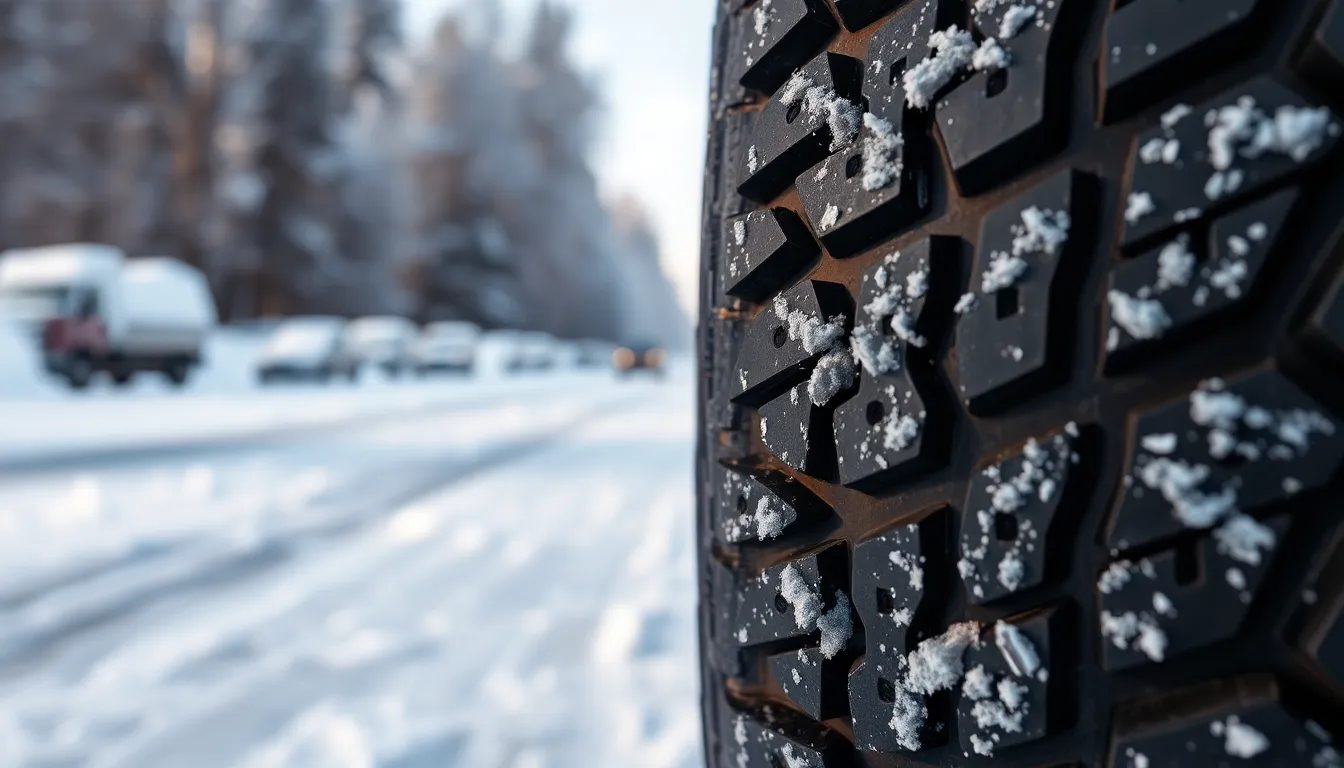
Studdable tires deliver important advantages that make them an exceptional choice for winter driving conditions. These specialized tires offer unique benefits that combine safety enhancements with practical flexibility.
Enhanced Traction on Ice
Metal studs transform studdable tires into powerful traction machines that penetrate ice and packed snow surfaces effectively. The studs dig into slippery surfaces to provide superior grip compared to studless winter tires or regular winter tires without studs. Braking performance improves dramatically on icy roads when studs are installed, giving drivers greater control during emergency stops. Acceleration becomes more predictable and stable as the metal studs bite into frozen surfaces that would otherwise cause wheels to spin uselessly.
We observe that studded tires deliver the crucial traction needed for safe navigation on hazardous winter roads where ice creates dangerous driving conditions.
Versatility and Customization
Studdable tires provide drivers with flexible options to customize their winter driving setup based on changing road conditions. Drivers can operate these tires without studs on mostly clear roads and add stud insertion when severe ice conditions are expected. This adaptability allows for safer driving without permanently committing to studs that may damage dry pavement surfaces.
We find that studdable tires serve as a practical middle ground between studless tires and fully studded tires, enabling seasonal adaptation based on weather patterns. Regulatory compliance becomes easier in areas where studded tire use faces restrictions, as drivers can remove or avoid installing studs when local laws require it. The customization aspect means drivers maintain control over when and how studs are deployed, matching tire performance to exact winter driving scenarios.
Studdable vs Studded vs Non-Studded Tires

Understanding the distinct characteristics between these three tire categories helps drivers select the optimal winter traction solution. Each type offers unique advantages depending on driving conditions and regional regulations.
Key Differences Explained
Studded tires arrive with pre-installed metal studs that provide exceptional grip on ice and snow surfaces. These tires deliver immediate winter performance but create pavement damage when operated on dry roads, leading to widespread regulatory restrictions across many regions.
Studdable tires feature the same winter-ready construction as studded variants but exclude factory-installed studs. Drivers can add metal studs later based on seasonal requirements or local regulations, offering maximum flexibility for varying winter conditions throughout different months.
Non-studded tires rely exclusively on specialized tread patterns and advanced rubber compounds for winter traction. These studless options eliminate pavement damage concerns while providing reliable performance on snow-covered surfaces, though they demonstrate reduced effectiveness on black ice compared to studded alternatives.
The installation flexibility of studdable tires makes them particularly valuable in areas where studded tire regulations change seasonally or where drivers encounter mixed winter conditions throughout their routes.
Performance Comparisons
| Tire Type | Ice Traction | Snow Performance | Dry Road Safety | Regulatory Status |
|---|---|---|---|---|
| Studded | Excellent | Excellent | Poor (pavement damage) | Restricted in many areas |
| Studdable (with studs) | Excellent | Excellent | Poor (pavement damage) | Varies by region |
| Studdable (without studs) | Good | Very Good | Excellent | Generally unrestricted |
| Non-studded | Good | Very Good | Excellent | Unrestricted |
Traction performance varies significantly between categories, with studded and studdable tires equipped with studs delivering superior grip on packed snow and black ice surfaces. Metal studs penetrate through ice layers to reach underlying pavement, creating mechanical grip that rubber compounds alone cannot match.
Durability considerations favor non-studded options for mixed driving conditions since metal studs wear down more rapidly on dry pavement surfaces. Studded and studdable tires with installed studs require careful route planning to avoid unnecessary wear and potential road damage violations.
Regulatory compliance presents the most complex decision factor, as studded tire restrictions vary by state and municipality. Non-studded tires face no regulatory limitations, while studdable tires offer the advantage of stud removal when entering restricted areas or during off-season storage periods.
When to Choose Studdable Tires
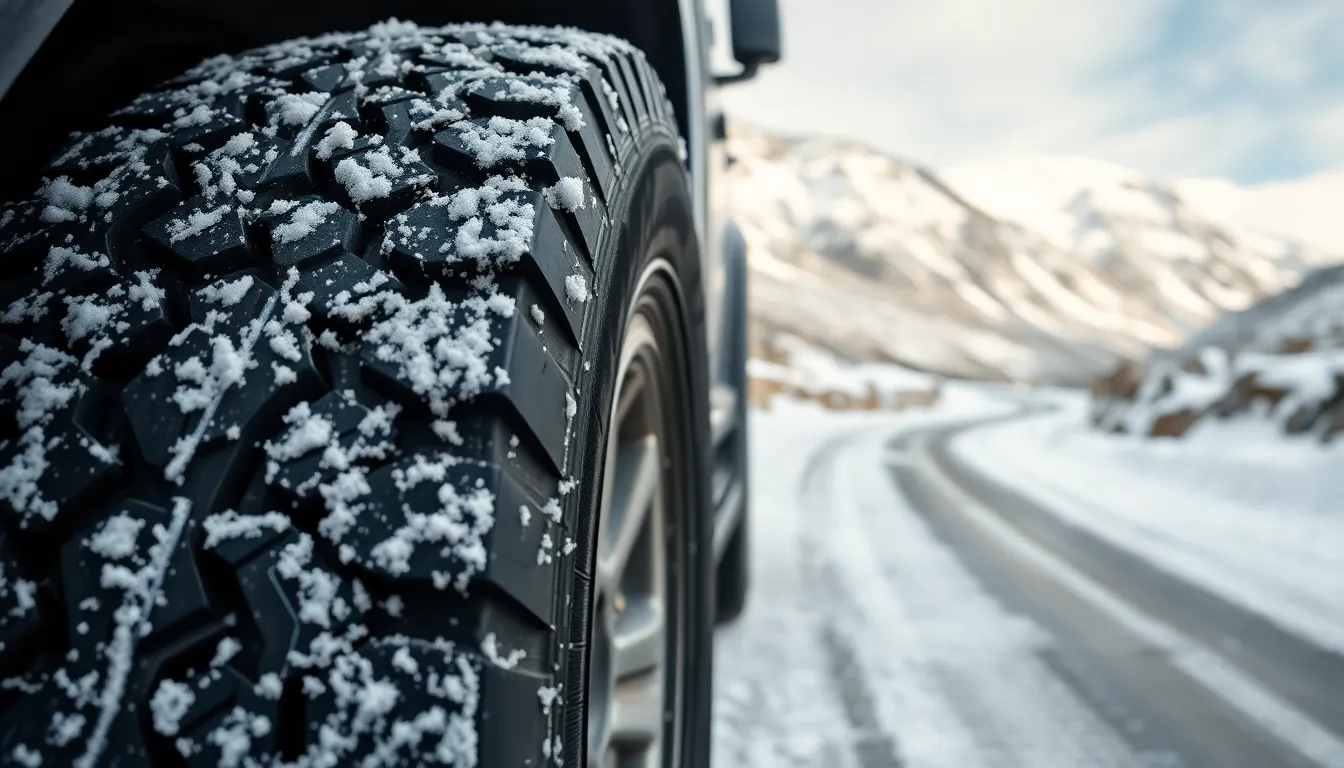
Studdable tires excel in exact winter driving scenarios where flexibility and adaptability matter most. We recommend these tires when your winter driving conditions vary significantly throughout the season.
Weather Conditions
Studdable tires perform best in regions where roads frequently encounter snow and ice but also experience periods when studs aren’t necessary or are restricted by law. Mixed winter weather patterns make these tires ideal since drivers can add studs during icy conditions and remove them when roads are clear to reduce tire wear and road noise.
Areas with fluctuating winter temperatures benefit most from studdable tire technology. Icy patches alternating with clear or plowed roads create the perfect environment for this tire type’s versatility. We’ve observed that drivers in transitional climate zones particularly appreciate the ability to customize their traction setup based on current conditions.
Temperature variations throughout winter seasons make studdable tires a practical investment. Regions experiencing sudden ice storms followed by warm spells allow drivers to adapt their tire performance without purchasing multiple tire sets.
Driving Habits and Terrain
Regular travel on mountainous or rural roads with unplowed snow and ice makes studdable tires an enhanced safety choice. These tires provide the capacity to adapt traction properties depending on terrain and driving needs while balancing improved grip with smoother rides on dry surfaces.
Drivers who frequently transition between urban and remote areas find studdable tires particularly valuable. City streets typically receive regular plowing and salting while rural routes often remain untreated for extended periods. This variability in road maintenance creates situations where stud installation becomes beneficial for exact portions of regular driving routes.
Commuters traveling diverse terrain types throughout their daily drives gain important advantages from studdable tire flexibility. Highway driving on clear pavement requires different traction characteristics than handling icy parking lots or unpaved driveways.
Studdable tires offer drivers control over their tire setup for safety and performance while providing versatility for areas with fluctuating winter road conditions.
Installation and Maintenance

Proper installation and ongoing maintenance ensure studdable tires deliver optimal performance throughout their lifespan. These practices directly impact both safety and tire longevity.
Professional vs DIY Installation
Professional installation guarantees proper stud placement and prevents tire damage that commonly occurs with DIY attempts. Tire technicians use pneumatic stud guns and follow manufacturer torque specifications to secure each stud correctly.
DIY installation carries important risks including uneven stud placement, tire sidewall damage, and voided warranties. Most tire manufacturers explicitly void coverage when customers install studs themselves without proper equipment.
Professional shops complete installation in 30-45 minutes per tire using specialized tools that ensure consistent depth and alignment. This investment protects your tire warranty while maximizing stud effectiveness throughout the winter season.
Proper Care and Storage
Regular cleaning maintains tread surface integrity and prevents debris accumulation around stud holes. We recommend washing studdable tires weekly during winter months to remove salt, sand, and ice buildup.
Storage requires a cool, dry environment away from direct sunlight and temperature fluctuations. Stack tires horizontally or hang them individually to prevent deformation during off-season storage periods.
Tire pressure monitoring becomes critical as cold temperatures cause 1-2 PSI drops for every 10-degree temperature decrease. Check pressure monthly using a quality gauge to maintain manufacturer recommended levels.
Rotation every 5,000-7,500 miles ensures even wear patterns across all four tires. This practice extends overall tire life while maintaining consistent traction performance on winter roads.
Legal Considerations and Regulations

State authorities control studdable and studded tire regulations across the United States, with most restrictions targeting the actual use of studded tires rather than studdable tires themselves. Metal studs damage road surfaces when driven on pavement without ice or snow coverage, prompting these regulatory measures.
Permitted Usage Periods
Most states limit studded tire usage to exact winter months, typically allowing them from November through April. Drivers can install studdable tires year-round since they don’t contain studs until we add them. Once studs are inserted, these tires must comply with local studded tire laws and seasonal restrictions.
State Restrictions and Prohibitions
Several states completely prohibit studded tire use due to pavement damage concerns. Others allow studded tires only during designated winter periods or in exact geographic regions where icy conditions are common. These regulations apply once studs are installed in studdable tires.
Installation Requirements
Jurisdictions often require retailers to sell studdable tires without pre-installed studs, giving consumers the option to add them later based on local laws and driving conditions. Professional installation becomes mandatory in many areas to ensure proper stud placement and compliance with safety standards.
Penalties and Enforcement
Violating studded tire regulations results in fines and potential legal penalties that vary by state. Law enforcement typically focuses on studded tire violations during off-season periods when road damage is most likely to occur. We recommend checking current local regulations before installing studs in studdable tires.
Compliance Verification
Local authorities determine exact regulations for your area, as laws change frequently and vary significantly between jurisdictions. Contact your state’s Department of Transportation or local motor vehicle agency to verify current studdable and studded tire regulations before making installation decisions.
Cost Analysis

Studdable tires represent a strategic investment that balances upfront expenses with long-term versatility benefits. Understanding the financial implications helps us make informed decisions about winter tire purchases.
Initial Investment
Studdable tires cost more than regular winter tires due to their reinforced construction designed to accommodate metal studs. The base price typically falls below fully studded tires purchased with pre-installed studs, making them an attractive middle-ground option. Additional expenses include purchasing the metal studs separately and professional installation fees when completed by tire shops.
Reinforced tread design increases manufacturing costs but provides the structural integrity necessary for stud installation. Professional installation typically ranges from $15-25 per tire, depending on regional labor rates and shop pricing. We recommend budgeting for both the tire cost and installation services to ensure proper stud placement and optimal performance.
Long-Term Value
Studdable tires deliver exceptional long-term value through their adaptable nature across multiple winter seasons. Studs can be installed during icy conditions and removed during milder winters to extend tire life and reduce unnecessary road wear. This flexibility potentially eliminates the need for separate tire sets for different winter conditions.
Versatile use patterns optimize both performance and expense across varying seasonal requirements. Removing studs when ice conditions subside prevents excessive pavement wear and preserves tire integrity for extended service life. But, improper installation or excessive stud use can accelerate pavement deterioration and negatively impact tire longevity.
Strategic stud management maximizes tire lifespan while maintaining safety performance when harsh conditions demand enhanced traction capabilities.
Conclusion
Studdable tires represent the perfect balance between winter performance and flexibility for today’s drivers. We’ve explored how these specialized tires offer the unique advantage of adapting to changing winter conditions while providing excellent traction even without studs installed.
The investment in studdable tires pays off through their versatility and long-term value. Whether you’re dealing with occasional ice storms or frequent winter travel across varying terrains these tires give you the control to customize your driving experience.
Remember that proper installation and maintenance are crucial for getting the most from your studdable tires. Always check local regulations before adding studs and consider professional installation to ensure optimal performance and safety on winter roads.
Frequently Asked Questions
What are studdable tires and how do they differ from regular winter tires?
Studdable tires are specialized winter tires with pre-molded holes designed to accommodate removable metal studs. Unlike regular winter tires, they offer the flexibility to add or remove studs based on road conditions. They feature unique tread patterns, reinforced sidewalls, and rubber compounds that remain flexible in extreme cold, providing enhanced traction options for varying winter driving scenarios.
Can I install studs in studdable tires myself?
While technically possible, professional installation is strongly recommended. DIY installation can lead to uneven stud placement, potential tire damage, and voided warranties. Professionals use specialized pneumatic stud guns and follow precise torque specifications to ensure proper placement. Professional installation typically costs between $50-100 but guarantees optimal performance and maintains warranty coverage.
Are studdable tires legal to use year-round?
Yes, studdable tires without studs installed can be used year-round in most jurisdictions. However, once studs are added, they become subject to seasonal restrictions that vary by state. Most states limit studded tire usage to specific winter months due to potential road surface damage. Always check local regulations before installing studs to ensure compliance.
How do studdable tires perform compared to studded and non-studded tires?
Studdable tires offer versatility between the two extremes. Without studs, they perform similarly to high-quality winter tires. With studs installed, they provide exceptional ice traction comparable to factory-studded tires. This adaptability makes them ideal for regions with fluctuating winter conditions, allowing drivers to customize their traction setup based on current road conditions.
When should I choose studdable tires over other winter tire options?
Choose studdable tires if you experience varying winter conditions, frequently travel on mountainous or rural roads, or need flexibility in your winter driving setup. They’re particularly beneficial for commuters navigating diverse terrains where road maintenance varies. The ability to add studs when severe ice conditions arise while running stud-free on clear roads makes them ideal for unpredictable winter climates.
How much do studdable tires cost compared to regular winter tires?
Studdable tires typically cost 15-25% more than regular winter tires due to their reinforced construction and pre-molded stud holes. While the initial investment is higher, they offer long-term value through adaptability and potentially extended tire life. Factor in professional installation costs ($50-100) and stud removal fees when budgeting for the complete studdable tire system.
What maintenance do studdable tires require?
Studdable tires require regular cleaning to maintain tread integrity, proper storage when not in use, and consistent tire pressure monitoring (cold weather can cause pressure drops). Rotate tires every 5,000-7,500 miles for even wear. If studs are installed, inspect them regularly for looseness or damage, and have them professionally removed when seasonal restrictions require it.
How long do studs last once installed in studdable tires?
Properly installed studs typically last one full winter season with normal driving. Aggressive driving, frequent use on bare pavement, or poor installation can reduce their lifespan. Most drivers replace studs annually or bi-annually depending on usage patterns. The tire itself can accommodate multiple stud installations throughout its lifespan if properly maintained.

